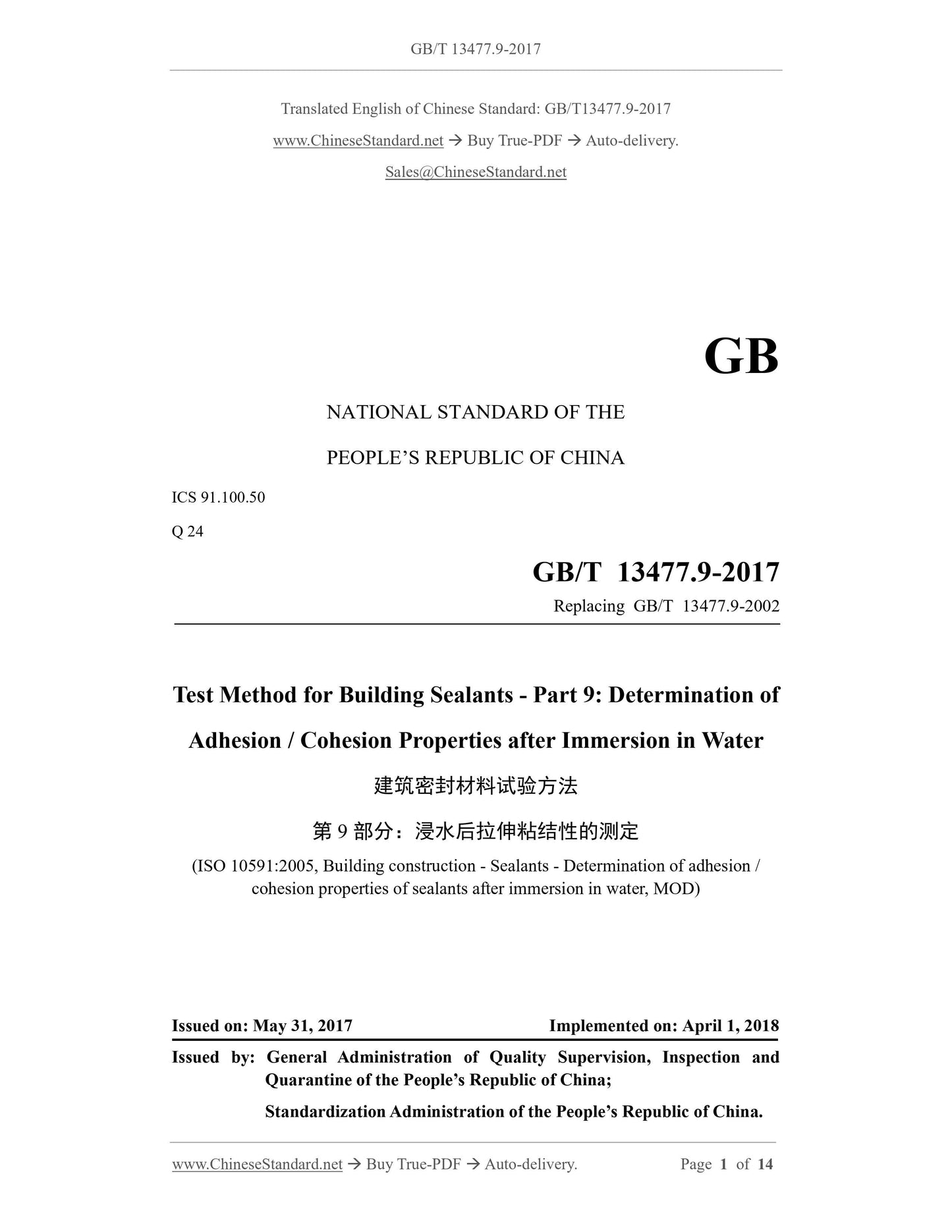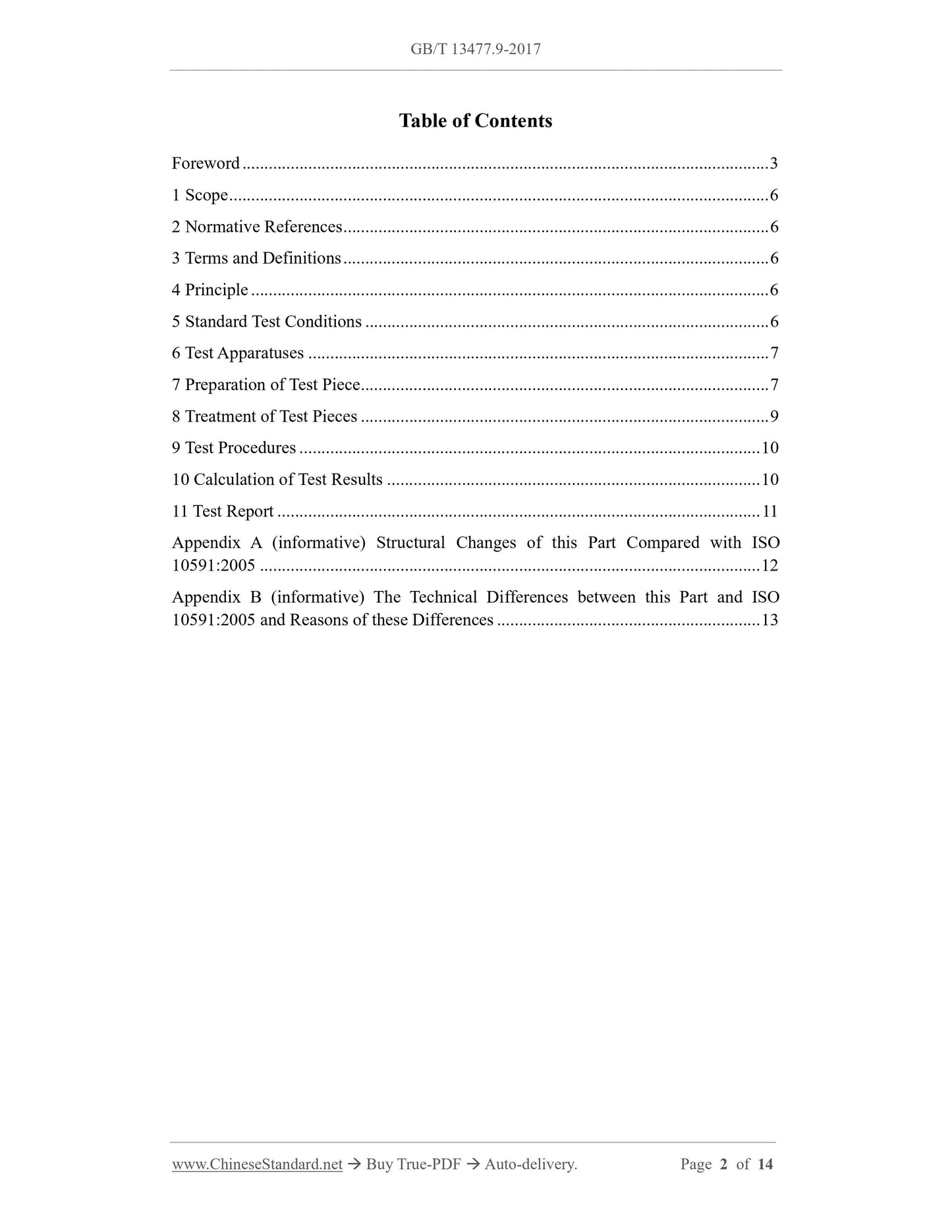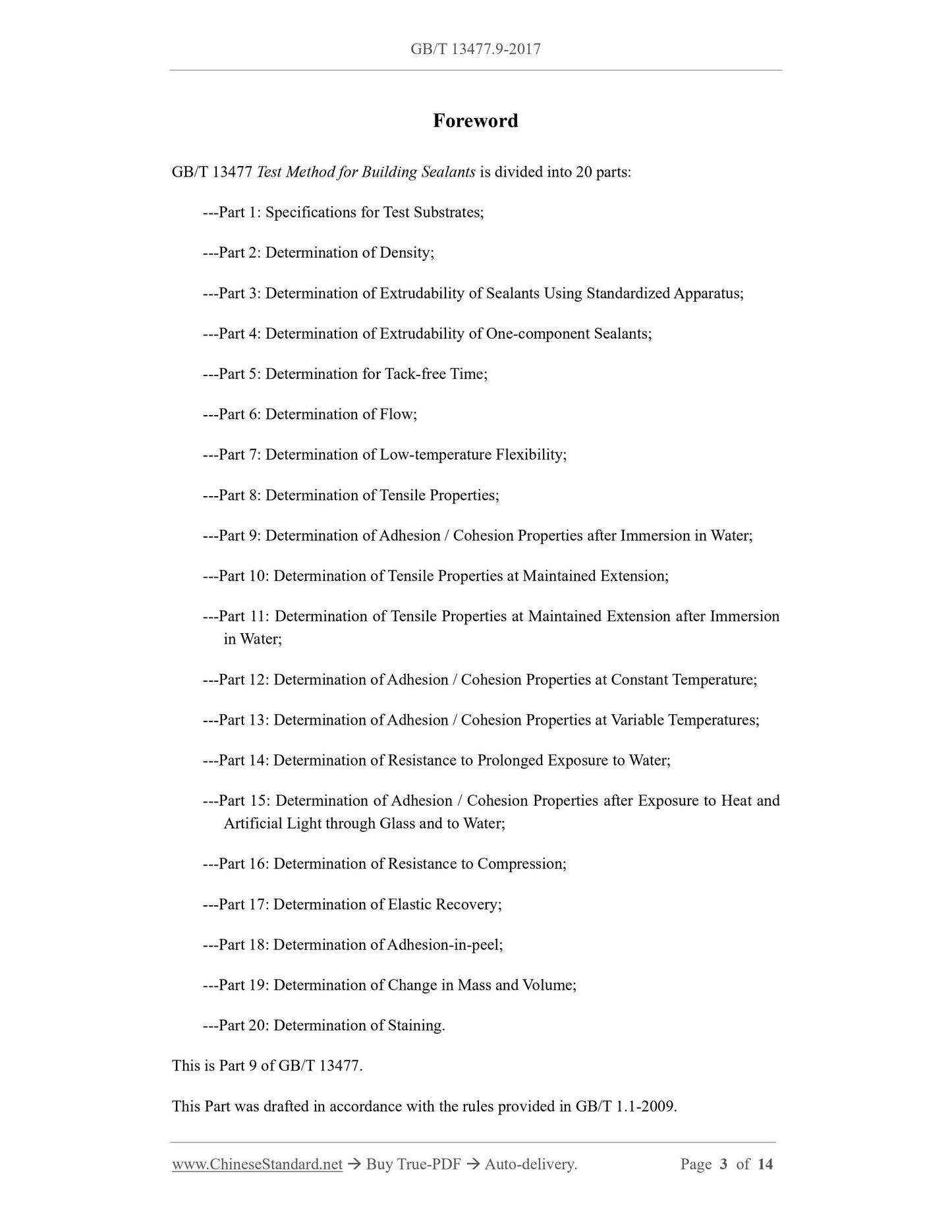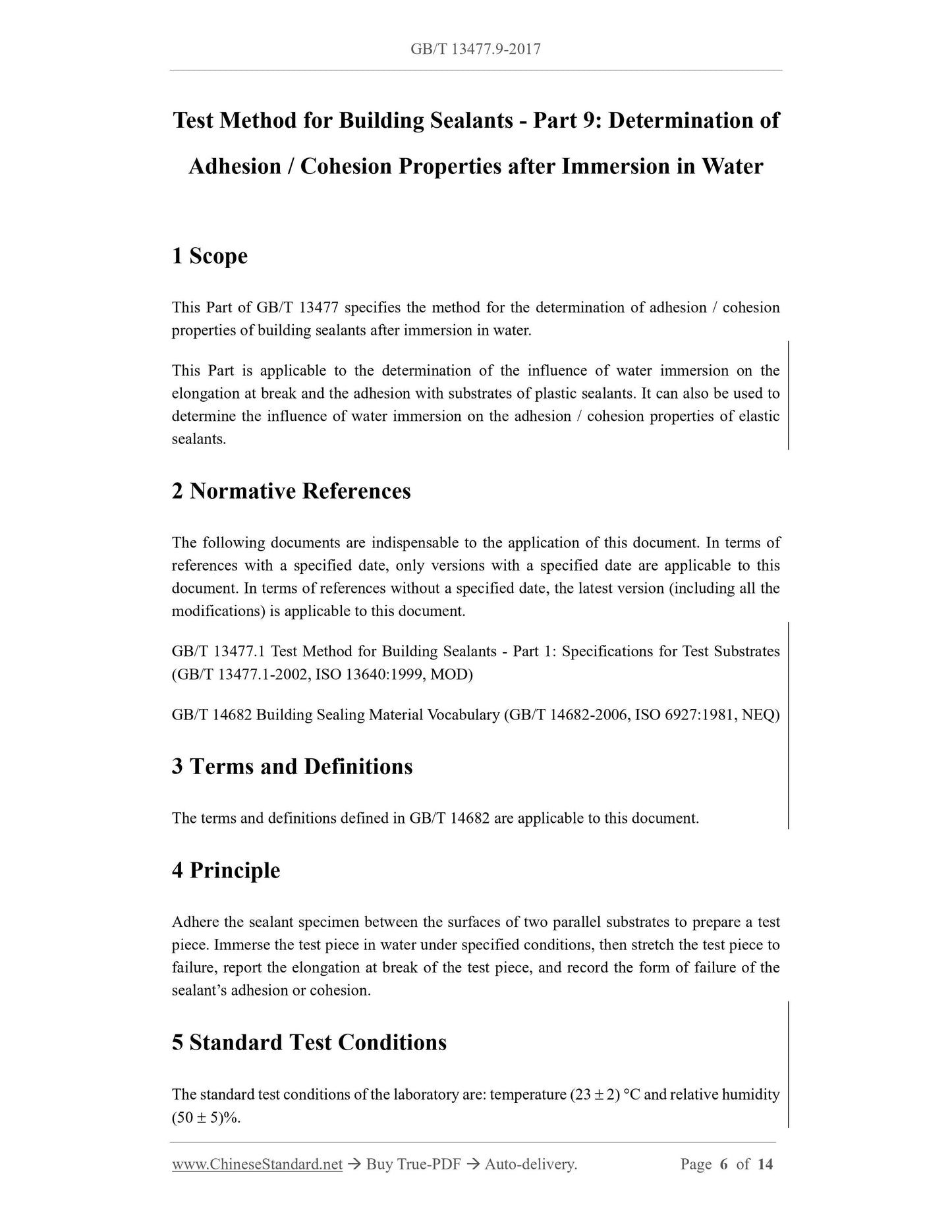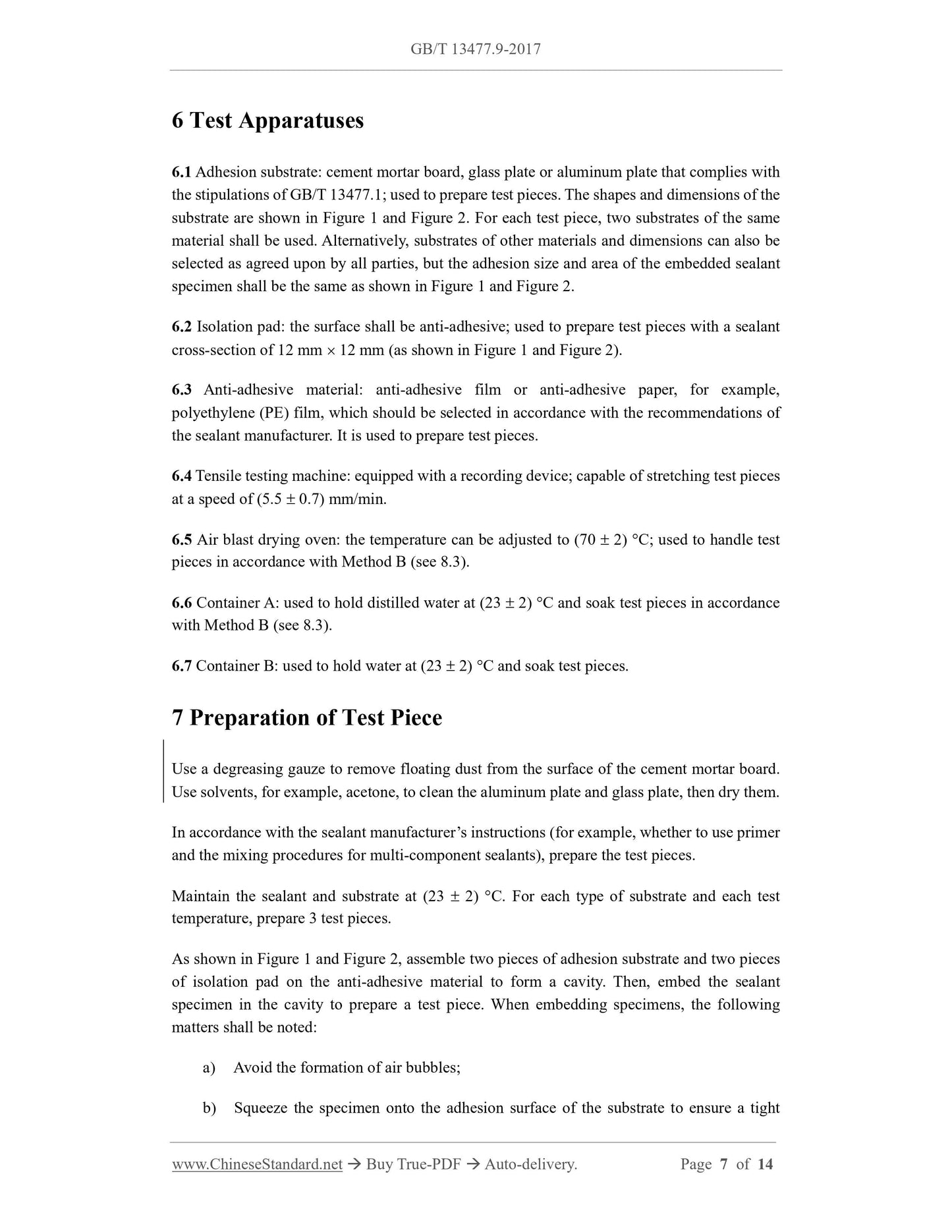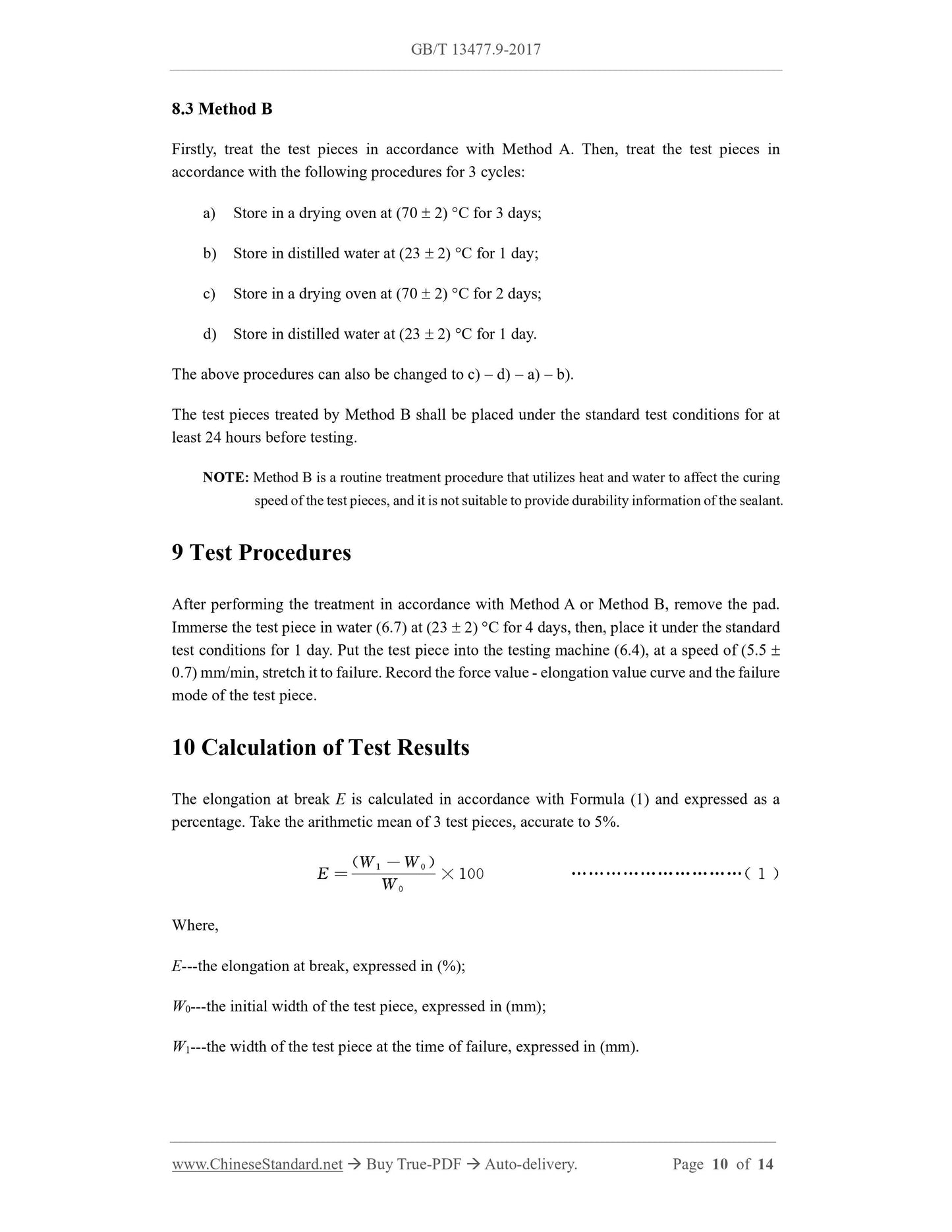1
/
of
6
www.ChineseStandard.us -- Field Test Asia Pte. Ltd.
GB/T 13477.9-2017 English PDF (GB/T13477.9-2017)
GB/T 13477.9-2017 English PDF (GB/T13477.9-2017)
Regular price
$165.00
Regular price
Sale price
$165.00
Unit price
/
per
Shipping calculated at checkout.
Couldn't load pickup availability
GB/T 13477.9-2017: Test method for building sealants -- Part 9: Determination of adhesion/cohesion properties after immersion in water
Delivery: 9 seconds. Download (and Email) true-PDF + Invoice.Get Quotation: Click GB/T 13477.9-2017 (Self-service in 1-minute)
Newer / historical versions: GB/T 13477.9-2017
Preview True-PDF
Scope
This Part of GB/T 13477 specifies the method for the determination of adhesion / cohesionproperties of building sealants after immersion in water.
This Part is applicable to the determination of the influence of water immersion on the
elongation at break and the adhesion with substrates of plastic sealants. It can also be used to
determine the influence of water immersion on the adhesion / cohesion properties of elastic
sealants.
Basic Data
| Standard ID | GB/T 13477.9-2017 (GB/T13477.9-2017) |
| Description (Translated English) | Test method for building sealants -- Part 9: Determination of adhesion/cohesion properties after immersion in water |
| Sector / Industry | National Standard (Recommended) |
| Classification of Chinese Standard | Q24 |
| Classification of International Standard | 91.100.50 |
| Word Count Estimation | 9,956 |
| Date of Issue | 2017-05-31 |
| Date of Implementation | 2018-04-01 |
| Older Standard (superseded by this standard) | GB/T 13477.9-2002 |
| Quoted Standard | GB/T 13477.1; GB/T 14682 |
| Adopted Standard | ISO 10591-2005, MOD |
| Issuing agency(ies) | General Administration of Quality Supervision, Inspection and Quarantine of the People's Republic of China, Standardization Administration of the People's Republic of China |
| Summary | This standard specifies the determination of the tensile strength of the building sealant after immersion. This standard is applicable to the determination of the effect of immersion on the elongation at break and the adhesion of the plastic sealing material. It can also be used to determine the effect of immersion on the tensile bond properties of the elastomeric sealing material. |
Share
